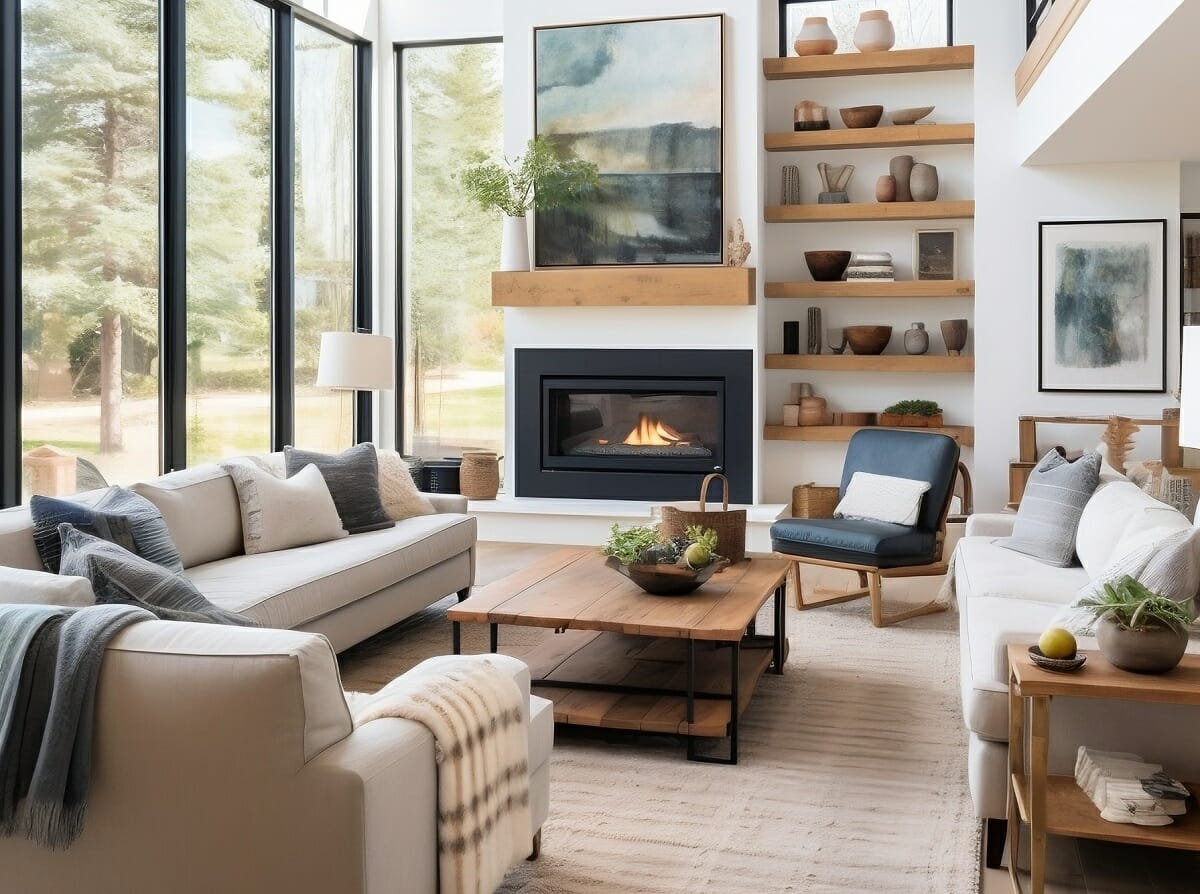The Typ of Subtraction
In our fast-paced, clutter-filled world, the concept of negative space often takes a backseat. Yet, it’s this very space—the empty canvas between the lines—that can truly elevate your minimalist living room. By embracing the power of negative space, you’re not just decluttering your room; you’re decluttering your mind.

What is Negative Space?
In design, negative space refers to the area surrounding a form or shape. In the context of interior design, it’s the empty space between furniture, artwork, and other elements in a room. While it might seem counterintuitive, more negative space can actually make a room feel more spacious and serene.
Why Negative Space Matters
1. Visual Clarity: Less is often more. By removing unnecessary clutter, you create a visually clear and calming environment.
2. Focus and Productivity: A minimalist room can help you concentrate better. Without distractions, your mind can wander freely, sparking creativity and productivity.
3. Stress Reduction: Clutter can be a significant source of stress. A minimalist space can promote relaxation and reduce anxiety.
4. Enhanced Aesthetics: Negative space can highlight the beauty of your chosen furniture and decor. It allows each piece to shine, creating a sophisticated and elegant look.
How to Embrace Negative Space
1. Declutter, Declutter, Declutter: The first step to creating a minimalist living room is to ruthlessly declutter. Keep only the essentials and donate or sell the rest.
2. Furniture Placement: Arrange your furniture strategically, leaving ample space between pieces. This will create a sense of openness and airiness.
3. Minimalist Decor: Choose a few key pieces of minimalist decor to add personality to your space. Remember, less is more.
4. Unparteiisch Color Palette: A parteilos color palette can help to create a calm and serene atmosphere. Consider using shades of white, gray, and rehbraun.
5. Natural Light: Let in as much natural light as possible. Open up your curtains and blinds to create a bright and airy space.
6. Mindful Consumption: Before bringing anything new into your home, ask yourself if it truly adds value. Avoid impulse purchases and focus on quality over quantity.
The Zen of Negative Space
By embracing the power of negative space, you can transform your living room into a serene sanctuary. It’s a space where you can relax, recharge, and reconnect with yourself. So, take a deep breath, let go of the excess, and discover the beauty of simplicity.
The Typ of Less is More
In our fast-paced world, cluttered spaces can quickly become overwhelming. Minimalism, a design philosophy centered around simplicity and functionality, offers a refreshing Plan B. By embracing negative space, you can transform your living room into a serene sanctuary.
What is Negative Space?
Negative space, in design terms, refers to the empty areas surrounding a subject. In minimalist design, it’s the space between furniture, decor, and architectural elements. This empty space, often overlooked, is a powerful tool for creating a calm and inviting atmosphere.
The Benefits of Negative Space
Reduced Stress: Clutter can contribute to feelings of anxiety and stress. By minimizing the number of objects in your living room, you can create a more peaceful and relaxing environment.
How to Embrace Negative Space in Your Living Room
1. Declutter Mindfully: Start by removing unnecessary items from your living room. Donate, sell, or store anything you don’t use or love.
2. Choose Versatile Furniture: Opt for multifunctional furniture that can serve multiple purposes. For example, a storage ottoman can double as a footrest or extra seating.
3. Prioritize Quality Over Quantity: Invest in high-quality pieces that will last. A few well-chosen items are better than a multitude of cheap, trendy decor.
4. Embrace Natural Light: Let in as much natural light as possible by opening curtains and blinds. Natural light can brighten up a space and create a sense of openness.
5. Use Unparteiisch Colors: A parteilos color palette can make a room feel larger and more serene. Consider shades of white, gray, rehbraun, and soft pastels.
6. Incorporate Minimalist Decor: Keep your decor simple and understated. A few carefully selected pieces, such as a statement piece of art or a unique sculpture, can add visual interest without overwhelming the space.
7. Create a Zen Eckball: Designate a small area of your living room as a zen corner. This could be a cozy reading nook with a comfortable chair and a few books, or a meditation space with a yoga mat and candles.
By following these tips, you can transform your living room into a minimalist haven. Remember, the goal is not to eliminate all possessions, but to curate a space that promotes relaxation, creativity, and overall well-being.